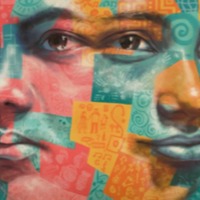
Ayesha
Experts estimate millions of women and children are victims of sex trafficking in India. Traffickers use false promises of employment or arrange sham marriages in India or Gulf States and subject women and girls to sex trafficking. In addition to traditional red light districts, women and children increasingly endure sex trafficking in small hotels, vehicles, huts, and private residences. Traffickers increasingly use websites, mobile applications, and online money transfers to facilitate commercial sex. Children continue to be subjected to sex trafficking in religious pilgrimage centers and by foreign travelers in tourist destinations. Many women and girls, predominately from Nepal and Bangladesh, and from Europe, Central Asia, Africa, and Asia, including minority populations from Burma, are subjected to sex trafficking in India. Ayesha was sold into sexual slavery by a man she fell in love with as a child, and had three children. Although pressured into prostituting her two daughters, she and the other women in her brothel resisted, and Ayesha left sex slavery with the help of an organization named Apne Aap, which also managed to find work for her eldest daughter. Ayesha’s story makes clear the vital role that organisations can play in bringing people sustainably out of slavery.